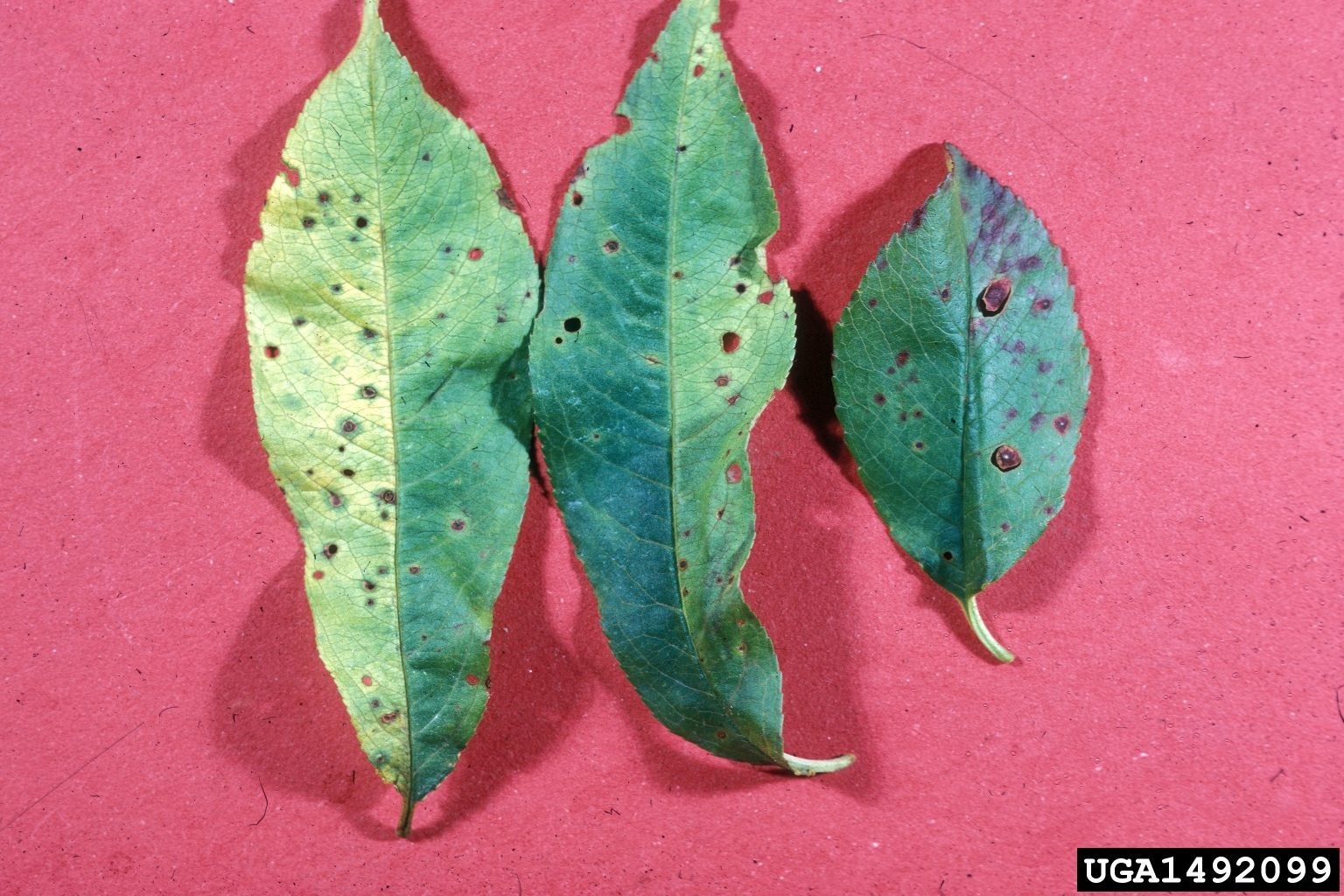
Bacterial leaf spot of peach, also known as bacterial shot hole, is a common disease on older peach trees and nectarines. This peach tree leaf spot disease is caused by the bacterium Xanthomonas campestris pv. pruni. Bacterial spot on peach trees result in loss of fruit and the overall malaise of trees caused by recurrent defoliation. Also, these weakened trees are more susceptible to winter injury.
Symptoms of Bacterial Leaf Spot of Peach Trees
The most characteristic sign of peach tree leaf spot are angular purple to purple-brown spots on foliage, followed by the center of lesion falling out, giving the leaves a “shot hole” appearance. Leaves soon turn yellow and drop. Fruit has small, water-soaked markings that enlarge and merge to eventually cover large areas. Cracking or pitting occurs along the lesions as the fruit grows, enabling brown rot fungus to infiltrate the fruit. Bacterial leaf spot also affects current season growth. Two types of cankers can be spotted on twigs.
- “Summer cankers” appear on green twigs after leaf spots can be seen. Cankers caused by the peach scab fungus look similar but are slightly raised while those caused by bacterial leaf spot are sunken and circular to elliptical.
- “Spring cankers” occur late in the year on young, tender twigs but only appear the following spring at buds or nodes right around the time the first leaves emerge.
Bacterial Spot Life Cycle
The pathogen for bacterial spot overwinters in protected areas such as cracks in the bark and in leaf scars that were infected the previous season. As temperatures rise over 65 degrees F. (18 C.) and budding begins, the bacteria begin to multiply. They are spread from cankers via dripping dew, rain splashing, or wind. Severe fruit infections occur most frequently when there is ample rainfall combined with high humidity. The infection is also most severe when the trees are planted in light, sandy soil and/or if trees are stressed.
Controlling Leaf Spot on Peaches
What methods for controlling leaf spot on peaches are available to combat this disease? Some varieties of peach are more susceptible to leaf spot, but all can be infected. The most vulnerable cultivars are:
- ‘Autumnglo’
- ‘Autumn Lady’
- ‘Blake’
- ‘Elberta’
- ‘Halehaven’
- ‘July Elberta’
There are, however, more resistant peach varieties. Bacterial spot resistant peaches include:
- ‘Belle of Georgia’
- ‘Biscoe’
- ‘Candor’
- ‘Comanche’
- ’Dixired’
- ‘Earliglo’
- ‘Early-Free Red’
- ‘Emery’
- ‘Encore’
- ‘Garnet Beauty’
- ‘Harbelle’
- ‘Harbinger’
- ‘Harbrite’
- ‘Harken’
- ‘Late Sunhave’
- ‘Loring’
- ‘Madison’
- ‘Norman’
- ‘Ranger’
- ‘Redhacen’
- ‘Redkist’
- ‘Redskin’
- ’Sentinel’
- ’Sunhaven’
More cultivars are being developed, so check with your local extension office or nursery for new resistant varieties. Keep your peach trees healthy by properly pruning out any diseased or dead limbs and fertilize and water as necessary. Too much nitrogen can aggravate the disease. While there are no completely successful sprays for control of this disease, chemical spray with copper-based bactericide and the antibiotic oxytetracycline have some effect used preventatively. Talk to your local extension office or nursery for information. Chemical control is doubtful, however, so the best long-term control is to plant resistant cultivars.
Sign up for the Gardening Know How newsletter today and receive a free copy of our e-book "How to Grow Delicious Tomatoes".

Amy Grant has been gardening for 30 years and writing for 15. A professional chef and caterer, Amy's area of expertise is culinary gardening.
